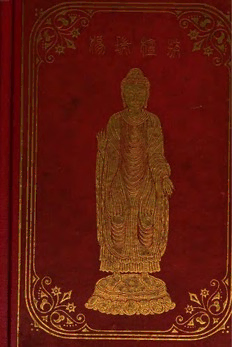
Travels of Fah-Hian and Sung-Yun, Buddhist pilgrims, from China to India (400 A.D. and 518 A.D.) PDF
Preview Travels of Fah-Hian and Sung-Yun, Buddhist pilgrims, from China to India (400 A.D. and 518 A.D.)
TRAVELS FAH -H IAN AND SU^TG-YUK 100° I ^ Y A a i S Oi 腿- HI V N 證 s m o - i M anaa Hisi j i i d妊 1贝8‘ JHOH O HI L ^ Y X O I X a i Y )^oo v a TNa ei8 ya ( 工茌 v过si vi arc ^. n ozj xs a Dnx^ass' sx sy wna L T a a v rr4 )lf'T' xriiK' ootn• Otk«*( V 0HT41TIM XK BClf USSXf KSK88V Oi XBS VOXTT T0ITU3 90>mxi tmq taxhov o< t xvtksituon o疋 xhx dHTxui^insr ?tia xhi TKIXOTeT tQXVT 4V0K XHS OBIMSSS' ionao^: i Hnana H v m( 00“ 90‘: dYia HKosiiaa mc丛• 1896* ]yH uB[pt tJ999tj09p*[ xo si aaHx<^hhMoHIol^otr^HIHaas• “ It is not a little surprising that we should have to acknow ledge the &ct that the voyages of two Chinese travellers, undertaken in the fifth and seventh century of our era, have done more to elucidate the history and geography of Buddhism in India^ than all that has hitherto been found in the San skrit and Pali books of India and the neighbouring countries.^ Life of Gaudcma^ p. 291, n. By Right Bev. P. Bigaadet, 一 Yicar-Apostolic of Ava and Pegu. 1868. PREFACE. The present work contains two Translations from the Chinese一 (1) The Travels of Fah-HIan (400 415 a.d.), and (2) The Mission of Sung-Tun; both Buddhist pilgrims from China to India. A translation of Fah-Hian’s Pilgrimage, by M. Abel-R^musat, was published in Paris (1836), under the well-known title, Fo-koue-ki. Of this work, M. Stanislas Julien has said that, although it is u tr^s-recommandable pour V 6poqu© ou il a 4tk public, il n’est pas sans dangers pour les personnes qui ne sont pas en dtat de verifier ses traductions” (Yi© de Hiouen-Thsang, p. xi. n). It was, in fact, published at a period when little was known in Europe of Chinese-Buddliist literature, and without haying received the last revision of its lamented author. That period has now passed by, and, owing to the labours of M. Abel-E^musat's successors in the same viii PREFACE. field, and especially to the works of M. Stanislas Julien, w© are able to approach the subject with some degree of confidence. To shew the faulty character of the translations found in the Fo-koue-ki, it may be as well to select any chapter in the book, and consider a few of them in detail. Let us take the 20th chapter as an example. In that chapter (line 5) we read—“ on y est tr^s- affectioiin6 k la loi,” as a- translation of 大 愛 道 but this plirase is, in fact (as we learn from Jul. iii. 495), the Chinese form of the name of Mah&praj&patt, the aunt of Buddha. Again, in the words immediately following the above—“ aussi dans Fenceinte du temple”一we have a translation of 故 箱 舍 處 but, in truth, this clause ought to be joined with the previous one, and the whole rendered, “ in the spot where stands the old Yihftra of Mah&praj&pati,” (tbe use of the symbol 故,(because), for*古 (old or antique) is of very frequent occurrence in the present work). Following the same sentence, w© read一“au lieu oik etait le mur du puits du vieillard Siu-tha,” 須 達 長 者 井 壁 處 W the expression 井 壁 PREFACE. ix a phrase denoting the foundation walls of a build ing, and probably refers here to the foundation walls of Sudatta’s house. Further down (line 15) we read一“ k douze cents pas k l’orient de la route,” as though it were 道 東 whereas the text is really 道 西 “ to tlie westward of the road_” Towards the bottom of the page we read一“ c’est li ce qu’on appelle le Temple de Tchi-houan ’’ g{| 所 謂 穿亘 which Mr. Laidlay translates— “tjiere too-is the temple called Tchi-houan,” as though this temple were distinct from the one previously de scribed ; whereas the sense of the passage is, that the account lie had just given applies to and is descriptive of that, and all such Yih&ras, commonly known as (tsih sho wei) Chi-iin temples. And so we read in the history of the Sangh&r&mas of Lo-Tang, that in the neigh bourhood of various temples belonging to that city {e.gr. the White Horse Temple) the founders had laid out “Chi-iin” grounds, i.e. elaborate gardens一gardens, in fact, corresponding to those which were, in the first instance, attached to this Chi-iin Yih&ra at Sray&sti. On page 172 (line 2) we have the expression 郎 刻 牛 頭 摊 檀 佛 像 rendered, “ il fit en
